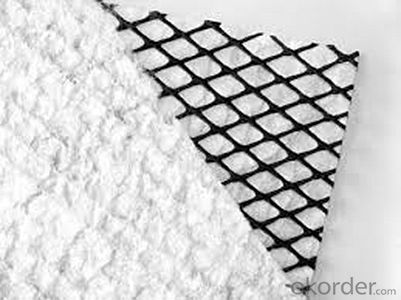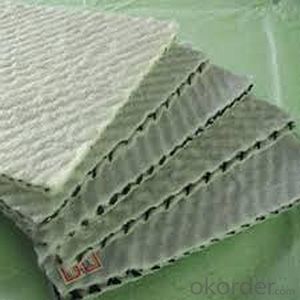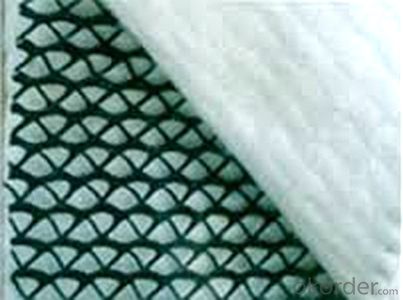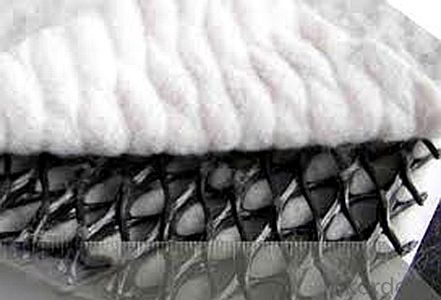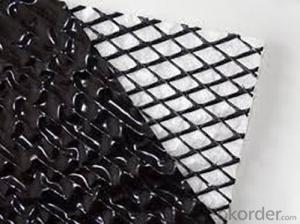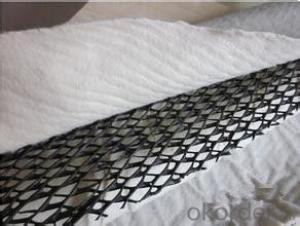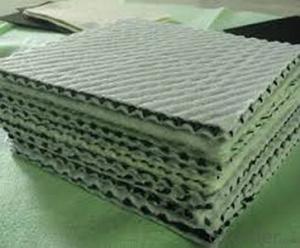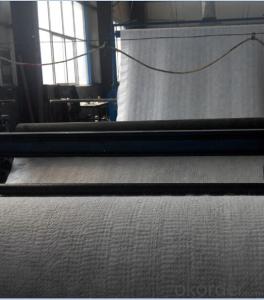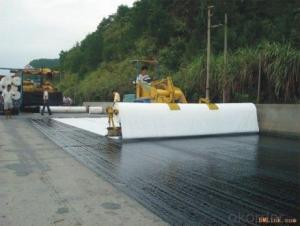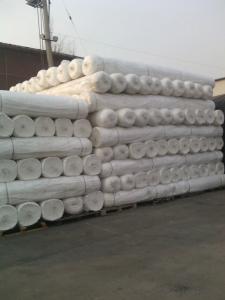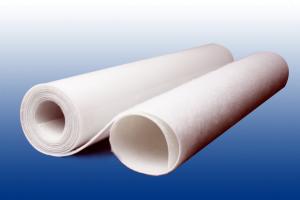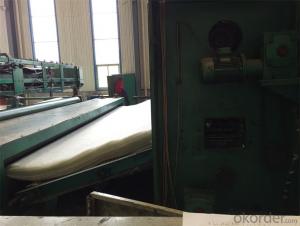Geotextile Sheet HDPE Compound Drainage Geonet for Real Estates
- Loading Port:
- China main port
- Payment Terms:
- TT OR LC
- Min Order Qty:
- 1000 m²
- Supply Capability:
- 1000000 m²/month
OKorder Service Pledge
OKorder Financial Service
You Might Also Like
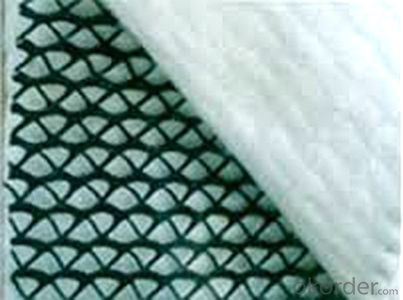
Product Introduction
Type:
Other Earthwork Products
Place of Origin:
Anhui, China (Mainland)
Brand Name:
CMAX
Model Number:
CE121
Material:
HDPE
Weight:
730gsm
Width:
2m
Length:
50m
Geonet is a new kind of civil engineering material, it is HDPE products, has the performance of high intensity, lasting chemical stability, weatherproofing ability, anti-corrupt and so on, widely used in construction field. Hereon we only introduce CE131 and CE151, which the most popular geogrids.
Our Service
1.On a regular basis or as per your request,we entrust national testing agencies to conduct quality inspections
2. Strictly in accordance with the ISO9001-2008 international quality system standard,we monitor and manage the whole process throughout production,quality testing,and measurement to ensure product quality
3. For quality-related construction delay or substandard construction(except for damage or losses due to customer’s responsibility or irresistible natural disasters),we have refunding,replacement,and repair services.We will respond to customers’ feedbacks on quality issues within 24 hours.
4.In order to provide customers with comprehensive technical support,we will provide technical and other related information upon request in a timely manner.
5.In required,we will appoint specialized technicians to the construction site to give technical trainings to construction people,and offer technical guidance throughout the whole construction process.
6.For damage due to shipment and delivery,after we receive the complaint,we will check the issure through provided pictures and videos.If our responsibility is confirmed,we wil offer free replacement.
7.When the construction is completed,as your request,our technical staff may participate in the final acceptance.
FAQ:
Q: What kind of payments does jenor support?
A: T/T, L/C, Cash are accepted.
Q: Do you charge for the samples?
A: Accordeing to our company policy, the samples are free, we only charge the freight fee. And we will return the freight fee during the next order.
Q: Can you produce according to customers' design?
A: Sure, we are professional manufacturer, OEM and ODM are both welcome.
Q: Do you have other products?
A: Yes, please check the pictures:
- Q: What are the key considerations for geotextile installation in areas with high seismic activity?
- When installing geotextiles in areas with high seismic activity, there are several key considerations that need to be taken into account. Firstly, the geotextiles should be designed to withstand the ground movements and vibrations caused by earthquakes. This may involve using geotextiles with high tensile strength and puncture resistance. Secondly, proper anchoring and securing techniques should be employed to ensure that the geotextiles remain in place during seismic events. This may include using appropriate fixing methods such as soil nails or ground anchors. Additionally, the selection of geotextile materials should consider their ability to resist degradation caused by the cyclic loading and ground movements associated with earthquakes. Overall, the key considerations for geotextile installation in areas with high seismic activity involve designing for seismic forces, securing the geotextiles effectively, and choosing durable materials that can withstand the effects of earthquakes.
- Q: What are the benefits of using geotextiles?
- There are several benefits of using geotextiles in various applications. Firstly, geotextiles provide effective erosion control by stabilizing the soil and preventing it from being washed away by water or wind. Secondly, they enhance the drainage system by allowing water to pass through while retaining the soil particles, thus improving the overall performance of the infrastructure. Thirdly, geotextiles act as a barrier to separate different soil layers or materials, preventing their mixing and maintaining their integrity. Additionally, geotextiles can increase the load-bearing capacity of soils, making them suitable for construction or reinforcement purposes. Lastly, geotextiles are cost-effective and easy to install, reducing both the time and labor required for the project.
- Q: What are the factors to consider when selecting a geotextile for a specific application?
- When selecting a geotextile for a specific application, there are several factors to consider. These include the project requirements such as the type of soil, expected loads, and environmental conditions. The geotextile's physical properties, such as strength, permeability, and durability, should align with the project's needs. Additionally, factors like installation methods, cost, and availability should also be taken into account to ensure the most suitable geotextile is chosen for the specific application.
- Q: Can plant roots penetrate geotextiles? Which kind of similar material can keep soil and water and let the plant roots pass through it?
- Surely, geotextile is polyester or polypropylene. Do you hear the bag? With this not to solve the ah, green grass for the special, but also to maintain soil and water. I am doing this specifically.
- Q: Are geotextiles poisonous?
- Geotextile is not toxic, the production of geotextile raw materials are polyester (PET) or polypropylene (PP). Polyester and polypropylene have become daily necessities. Many of the mineral water bottles are also produced by PET and PP raw materials.
- Q: How do geotextiles help with soil erosion control?
- Geotextiles help with soil erosion control by providing a physical barrier that stabilizes the soil and prevents erosion. They are specifically designed to allow water to pass through while retaining soil particles, which helps to reduce the velocity of water flow and minimize erosion. Additionally, geotextiles can increase soil strength and stability, improve vegetation establishment, and enhance overall erosion resistance in various applications such as road construction, embankments, and slope stabilization.
- Q: Do geotextiles and geogrids do check-in?
- Required, geotextile and geogrid material is qualified. But actually depends on the situation to set.
- Q: How are geotextiles tested for filtration efficiency?
- Geotextiles are tested for filtration efficiency using standardized laboratory tests, such as the ASTM D 4491 test method. This involves measuring the flow rate of water through the geotextile and analyzing the retention of particles of different sizes.
- Q: What are the challenges associated with the installation of geotextiles?
- There are several challenges associated with the installation of geotextiles. Firstly, one challenge is ensuring proper placement and anchoring of the geotextile material. It requires skilled labor and precise positioning to avoid any wrinkles or folds that could compromise its effectiveness. Secondly, geotextiles are often installed in harsh environments, such as steep slopes or areas with high water flow. This can make it difficult to secure the geotextile and prevent it from shifting or being damaged during installation. Another challenge is the potential for clogging or blockage of geotextiles due to fine particles or sediment. This can reduce their permeability and overall effectiveness, requiring regular inspection and maintenance. Lastly, the selection of the appropriate geotextile material for a specific application is crucial. Factors such as soil type, load requirements, and environmental conditions need to be carefully considered to ensure the geotextile can withstand the intended use and provide the desired performance. Overall, proper installation techniques, site-specific considerations, and regular maintenance are essential to overcome the challenges associated with the installation of geotextiles and maximize their effectiveness.
- Q: How do geotextiles help with load transfer in foundation systems?
- Geotextiles improve load transfer in foundation systems by distributing the load from the structure to a wider area, reducing the stress on the underlying soil and preventing soil settlement. They also help to reinforce weak or unstable soils, enhancing their load-bearing capacity and stability.
Send your message to us
Geotextile Sheet HDPE Compound Drainage Geonet for Real Estates
- Loading Port:
- China main port
- Payment Terms:
- TT OR LC
- Min Order Qty:
- 1000 m²
- Supply Capability:
- 1000000 m²/month
OKorder Service Pledge
OKorder Financial Service
Similar products
Hot products
Hot Searches
Related keywords





